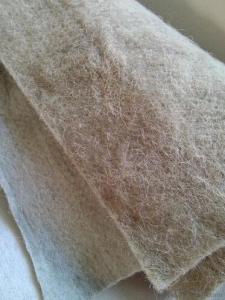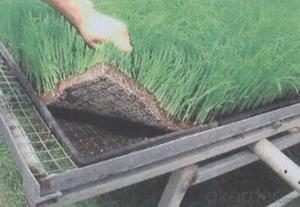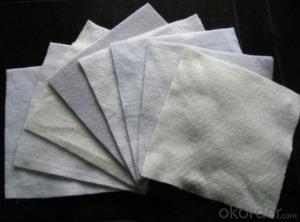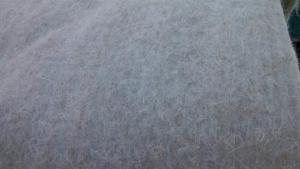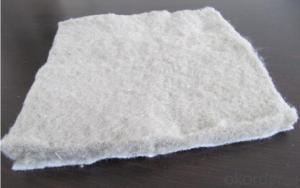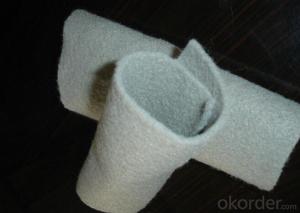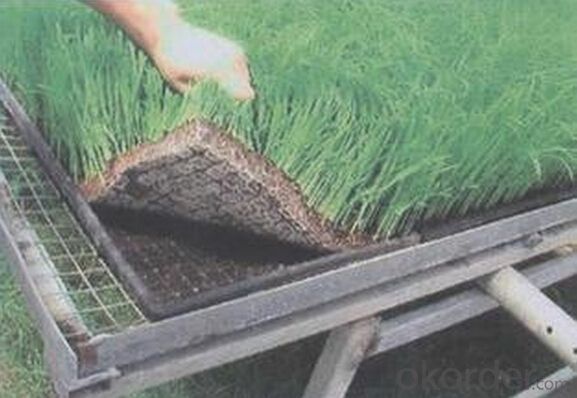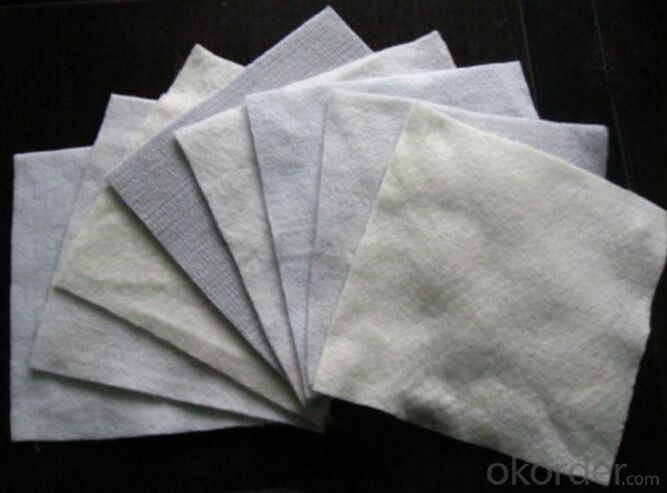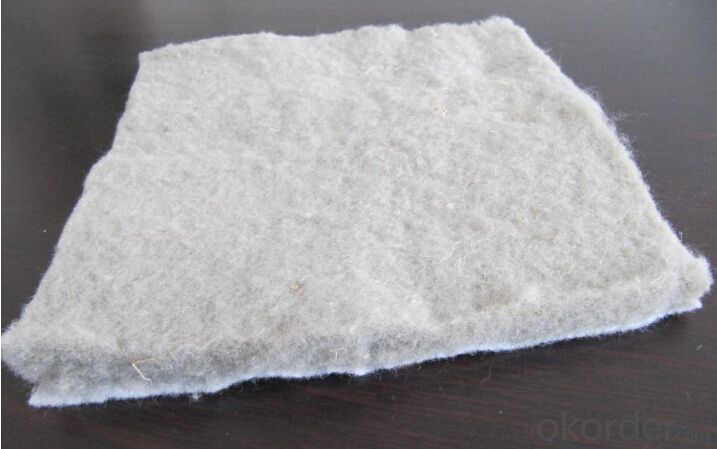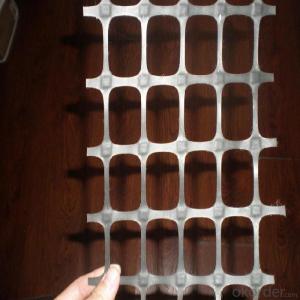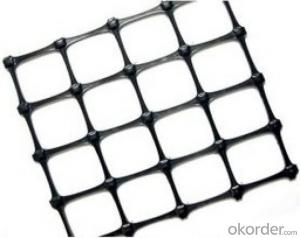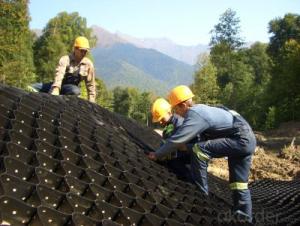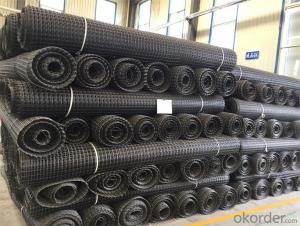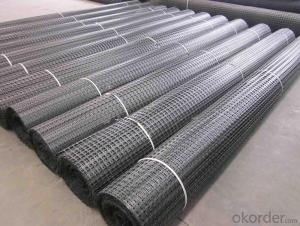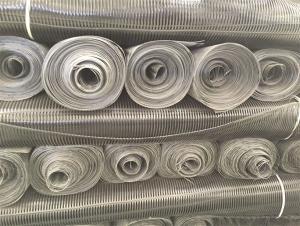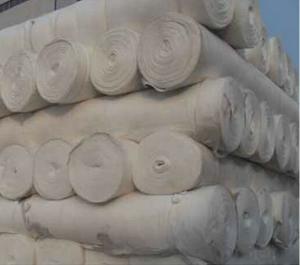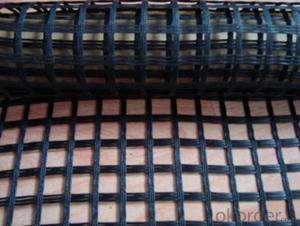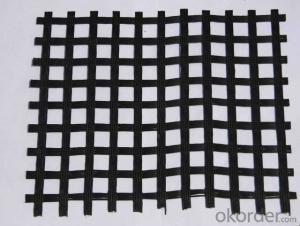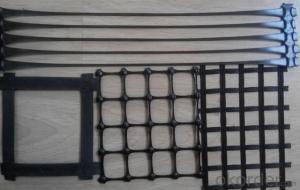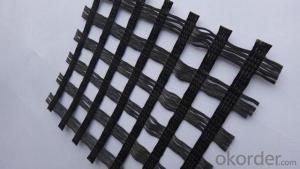Polypropylene Geogrids Nutrition Geotextile Factory Manufacturer Supplier
- Loading Port:
- Qingdao
- Payment Terms:
- TT OR LC
- Min Order Qty:
- 5000 m²
- Supply Capability:
- 2000000 m²/month
OKorder Service Pledge
OKorder Financial Service
You Might Also Like
Nutrition geotextile in water environmental engineering .
Specification:
It is compound of one layer non woven geotextile and one layer animal plant fiber felt . After the decom position of plant fiber felt layer can enhance the penetration resistance of the plant cells , Animal glue protein fiber breakdown can be long-term nitrogen fertilizer for plant growth.
It is a kind of used for laying under the green concrete plate, the restoration of ecological products which help plants to grow.
Product Feature:
1. Simple and fast construction
2. Achieve the greening effect quickly after construction
3. Due to the grass and composite fiber fabrics become into one integration, so it has the ability of certain degree of flow resistance for the water rising before the grass survive.
4. Composite fiber fabric is a continuous structure from slope top to slope toe, both ends are fixed, has high water flow resistance.
Technical Specification
5.0 m length and 1.05 m width. Reverse side all used filter material. Grass seeds: Bermuda grass (warm season grass), Bahia grass (warm season grass), Kentucky bluegrass (cold season grass), Tall fescue grass (cold season grass), Red fescue grass (cold season grass). Plant height: 0.1 ~ 0.5 m.
| NO. | Items | Specification | Notes | |||
| 1 | Total unit area weight g/sq.m | ≥380 | ||||
| 2 | dimension | width m | 1.0~2.0 | |||
| length m | as per user’s request | |||||
| 3 | Composite fiber fabrics | Material | Polyester Fiber | High strength PET | ||
| Unit area weight g/sq.m | ≥160 | |||||
| Mesh dimension mm | 8×8 | |||||
| Extension strengh kn/m | ≥11 | MD & CD | ||||
| 4 | Filtra layer | Material | Polyester non woven geotextile | |||
| Unit area weight g/sq.m | ≥40 | |||||
| 5 | Grass seeds, Fertilizer | Type | According to actual situation choose 3~5 grass seeds | |||
| Plant height m | 0.1~0.3 | |||||
| 6 | Fiber layer | Material | wood pulp cellulose | |||
| Unit areaweight g/sq.m | ≥15 | |||||
| 7 | flow resistance | ≥4 | not allow appear scour, suction and blanket turn-over etc. damage phenomenon | |||
| M/s | ||||||
| 8 | Anti-UV strengh conservation rate % | 65~80 | 3000hrs Continuously exposure 3000hrs | |||
| 9 | Supporting spare parts | ABS fastening nail | Material | ABS Resin | Fixed between two blankets by length direction | |
| Fiber diameter mm | 35 | |||||
| Nail length mm | 325 | |||||
| Lnail | Material | Steel wire (content 10% zinc-aluminium alloy) | Used to fix single blanket | |||
| Fiber diameter mm | 4 | |||||
| Nail length mm | 200 | |||||
| ABS connecting nail | Material | ABS Resin | Used in the slope between the two blankets ( width direction) | |||
| Nail length mm | 38 | |||||
| Connecting fiber | Material | High strength Polypropylene | Used in the slope between the two blankets ( width direction) | |||
| Length mm | Cut as per request | |||||
APPLICATION:
Generally laid on the river channel, slope protection etc. slope revetment projects, to control the water erosion, soil loss, meantime can reach the effect of slope ecological restoration and landscape greening, making river back to natural.
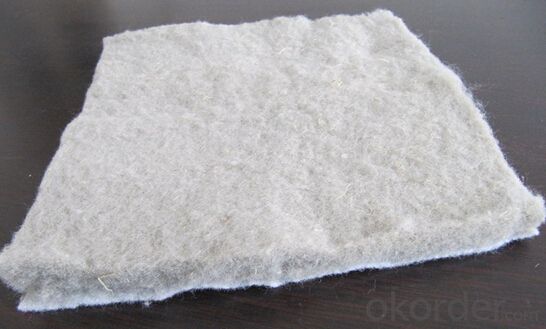
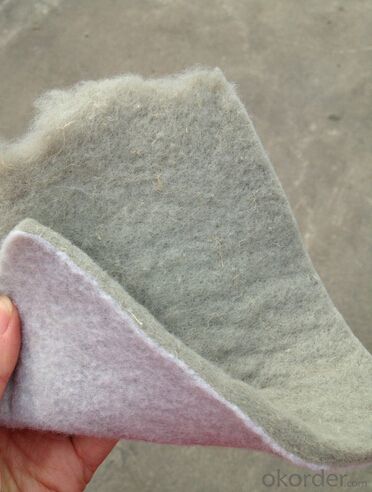
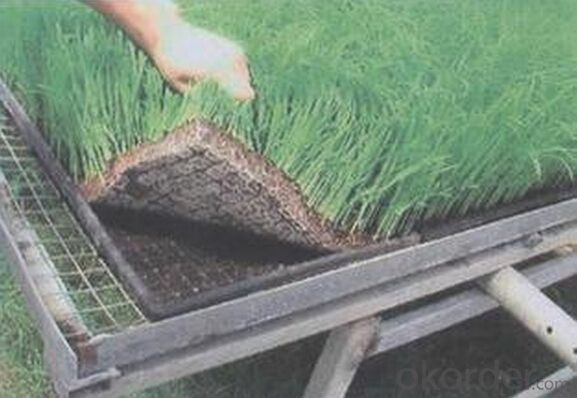
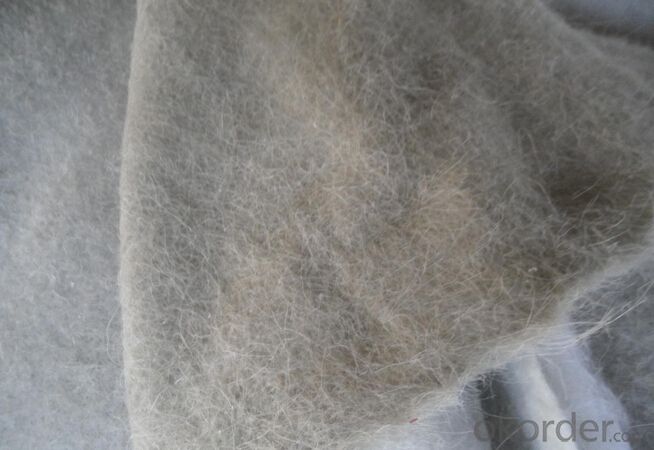


- Q: How do geogrids improve the stability of channel linings?
- Geogrids improve the stability of channel linings by enhancing soil reinforcement and preventing erosion. They act as a strong and flexible reinforcement material that helps distribute the loads and stresses applied to the channel lining. By interlocking with the surrounding soil, geogrids increase the overall tensile strength and shear resistance of the structure, preventing it from shifting or collapsing. Additionally, geogrids provide a barrier against erosion by stabilizing the soil particles and preventing them from being washed away by flowing water, thus maintaining the integrity of the channel lining.
- Q: How do geogrids improve the performance of reinforced soil foundations?
- Geogrids improve the performance of reinforced soil foundations by providing additional strength and stability to the soil. They act as a reinforcement by distributing the load over a wider area, reducing the stress on the soil and preventing settlement or failure. Geogrids also improve the lateral stability of the soil, preventing lateral movement and potential sliding. Overall, they enhance the structural integrity and longevity of the reinforced soil foundation, making it more resistant to various external forces such as heavy loads or natural disasters.
- Q: What is the typical length of a geogrid roll?
- The typical length of a geogrid roll can vary depending on the specific product and manufacturer, but it is commonly available in lengths ranging from 50 to 300 feet.
- Q: Basic introduction of fiberglass geogrid
- Glass fiber geogrid is a kind of new type of excellent soil base to enhance the pavement and subgrade. Fiberglass geogrid has the characteristics of high tensile strength, low elongation, high elastic modulus, high and low temperature resistance,
- Q: How do geogrids improve the performance of retaining walls?
- Geogrids improve the performance of retaining walls by providing reinforcement and stability. They are typically made of high-strength materials and are installed within the soil mass behind the wall. These grids distribute the loads exerted on the wall more evenly, reducing the pressure on the wall itself. This reinforcement prevents excessive movement, soil erosion, and potential wall failure. Additionally, geogrids enhance the overall strength and durability of the retaining structure, allowing for the construction of taller and more efficient walls.
- Q: What are the cost considerations for using geogrids in construction projects?
- Some cost considerations for using geogrids in construction projects include the initial cost of purchasing and installing the geogrids, the potential cost savings in reducing the amount of traditional materials needed, the cost of maintenance and repair over time, and the overall long-term cost-effectiveness compared to alternative construction methods.
- Q: How do geogrids improve the load distribution in foundations?
- Geogrids improve load distribution in foundations by providing reinforcement and stability to the soil. They distribute the load more evenly, reducing the concentration of stress on specific areas. This helps in preventing the formation of weak points or potential failures in the foundation. Additionally, geogrids enhance the bearing capacity of the soil, allowing it to better withstand heavy loads and providing long-term support to the foundation.
- Q: What are the factors that affect the durability of geogrids?
- The factors that affect the durability of geogrids include the material composition and quality, manufacturing method, exposure to environmental conditions (such as UV radiation, temperature variations, and moisture), installation techniques, and proper maintenance.
- Q: Steel wire mesh is a kind of geotechnical material
- The wire grid contact strength (tensile, shear, tensile and torsional) must be high, and better grid vertical ribs contact force transmission performance, the transverse ribs have the force to the longitudinal rib through the contact, and vice versa. Therefore, requirements must contact the overall good contact strength to close rib strength (tensile fracture is not at the junction, or both) intensity should be small, in order to match, this is the most reasonable, the most economical. Otherwise, the contact strength is much lower than the reinforcement strength, cannot play the security capability of the high strength tensile ribs, the formation of structural consequences caused by the "big horse car" type of waste
- Q: Can geogrids be used in geothermal energy systems?
- Yes, geogrids can be used in geothermal energy systems. Geogrids are often used to reinforce soil structures and provide stability, which can be beneficial in supporting the infrastructure and components of geothermal energy systems. They can help prevent soil erosion, provide load-bearing capacity, and enhance the overall performance and longevity of the system.
Send your message to us
Polypropylene Geogrids Nutrition Geotextile Factory Manufacturer Supplier
- Loading Port:
- Qingdao
- Payment Terms:
- TT OR LC
- Min Order Qty:
- 5000 m²
- Supply Capability:
- 2000000 m²/month
OKorder Service Pledge
OKorder Financial Service
Similar products
Hot products
Hot Searches
Related keywords
